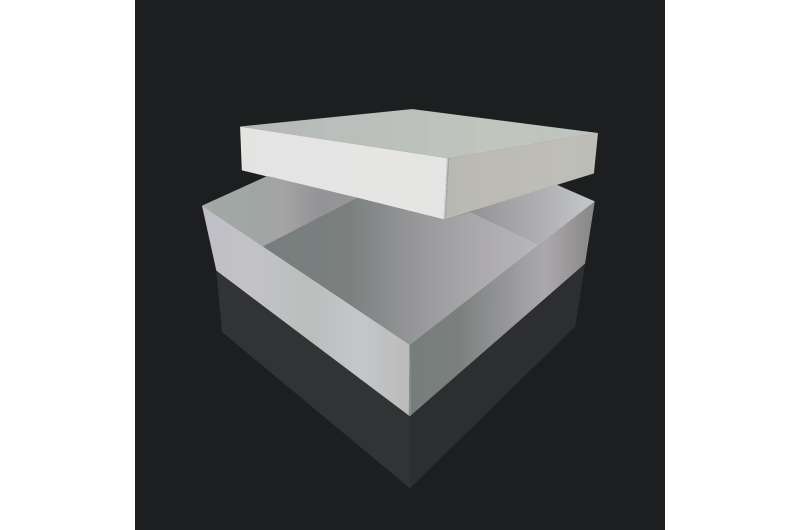This article has been reviewed according to Science X's editorial process and policies. Editors have highlighted the following attributes while ensuring the content's credibility:
fact-checked
peer-reviewed publication
trusted source
proofread
Is less more? Or is less sometimes less? Examining the consumer trend toward minimalist packaging

Researchers from Texas Christian University, University of Illinois Urbana-Champaign, and University of Georgia published a new Journal of Marketing article that examines the consumer trend towards minimalist packaging in consumable products.
The study is titled "Symbolically Simple: How Simple Packaging Design Influences Willingness to Pay for Consumable Products" and is authored by Lan Anh N. Ton, Rosanna K. Smith, and Julio Sevilla.
Designing products is both an art and a science. Companies have found that bringing together many visual elements in product design—with multiple colors, text, and illustrations incorporated in the packaging—can lead to enhanced brand engagement. However, in the last few years, consumers have increasingly desired more minimalist aesthetics.
The new study examines this consumer trend toward minimalist packaging in consumable products. The research team theorizes that consumers tend to assume that the simplicity of the product package suggests that the product contains few ingredients, which in turn increases perceived product purity, defined as the belief that the essential ingredients of the product are undiluted. With customers increasingly seeking product purity, there is an increase in a willingness to pay for consumable products with simple packaging.
The study defines simple packaging design as the extent to which a product package contains few design elements, which lack detail, are similar to one another, and are arranged in regular ways. Complex packaging design refers to the extent to which a product package contains many design elements that are highly detailed, different from one another, and arranged in irregular ways.
The researchers examined over 1,000 consumable product packages from the largest supermarket chain in the U.S. and find that the simplicity of the packaging design is positively associated with price.
As Ton explains, "in a series of experiments, we show that the visual design of a product can hold symbolic meanings to consumers. Specifically, although there is no information about the product's composition on the package, we find that consumers assume that the simplicity of the product package signals that there are few ingredients within, which enhances perceived product purity."
However, simple packaging does not always enhance consumers' willingness to pay. Smith says, "we find that store-brand products are not likely to experience the same benefits of simple packaging as non-store brand products. This is likely because the simplicity of the product package aligns with consumers' default assumption that store brands invest less in product quality. Thus, the simplicity of store brand packaging likely signals a lack of investment in the product rather than few ingredients and product purity."
Sevilla adds that "we also find the preference for simple packaging depends on consumers' goals. When consumers have a health goal, they are more likely to pay for a product with simple packaging. This is because simple packaging conveys that the product contains few ingredients and high product purity, attributes that tend to be associated with healthy products. By contrast, when consumers seek to indulge, they are less willing to pay for products with simple packaging. This is because complex packaging signals many ingredients and low product purity, attributes that tend to be associated with unhealthy and, by extension, tasty products."
This research extends the understanding of consumer interest in minimalist aesthetics by showing conditions under which design simplicity can be less desirable. Visual simplicity often conveys the idea of "less is more," but there are situations when it can simply signal "less is less." It also broadens the understanding of the concept of purity in the context of consumer research.
While explicit illustrations, such as a drawing of a mountain spring, can enhance consumer judgments of product purity, product purity can be inferred from more subtle visual cues (or even the lack of visual design elements). Relatedly, the study digs into the concept of product purity, which can hold a variety of meanings, and differentiates purity from its related construct of naturalness, which typically refers to products that are not man-made.
This research provides several insights for chief marketing officers:
- Simplifying package design can be an effective way for brands to visually (and nonverbally) communicate key product information to consumers. Simple packaging can lead consumers to infer that the product has fewer ingredients and is purer—thereby enhancing their willingness to pay.
- Aligning the visual design of the product package with ingredient information is essential to make a positive impact on consumers.
- Managers may consider the specific brand when using simple packaging because positive inferences are less likely to occur for store-brand products.
- When managers want to signal that their products are indulgent, opting for more complex designs could be more effective.
This work could be extended to durable goods such as technology products. For instance, Apple products are well-known for their simple packaging and are often seen as easier to use than their competitors. It may be fruitful to explore how inferences derived from simple packaging of technology products align or differ from those of consumable goods.
More information: Lan Anh N. Ton et al, Symbolically Simple: How Simple Packaging Design Influences Willingness to Pay for Consumable Products, Journal of Marketing (2023). DOI: 10.1177/00222429231192049
Journal information: Journal of Marketing
Provided by American Marketing Association




















